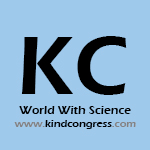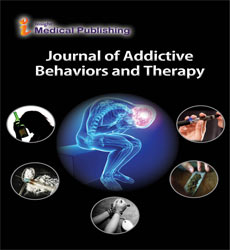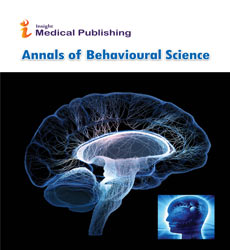Theme: Theme: New Scientific Discoveries and Technologies in Parkinsons Diseases
parkinsons-cs-2020
Why to attend:
It is our heartiest welcome you to the webinar on “6th International Conference on Parkinsons and Movement Disorders” during July 15-16, 2021
Parkinsons Congress 2021 will provide an opportunity to world researchers working in the field of neuroscience and neurological disorders to deliver talk on their research. It is a great platform for the speakers, experts, researchers, young researchers, students from both academics and industrialist to discuss their research and views. Delegates have great opportunity to explore and learn from eminence speakers. The conference includes demonstration, symposium, workshops, B2B meetings will be also be to discuss with different tracks in the field of neurological disorder. Parkinsons Congress 2021
is the leading gathering of neurologists, psychiatry, psychology researchers, and neurosurgeons with the theme of Research Strategies, propelled advancements and developments in Parkinson’s disease.
Parkinsons Congress 2021 encourages scientists and researchers & young researchers from all across the globe to present their research ideas and views on the topic of their respective field of neuroscience. For their latest research ideas we are felicitating them with various awards in various categories. The main aim is to encourage more and more people from all across the globe to enhance their knowledge.
Target audience:
- Neurologists and Directors
- Physicians
- Neuroscientists
- Specialists
- Researchers
- Professors
- Industrial Experts
- Neurosurgeons
- Psychiatrist
- Nutritional Scientists
- Lecturers and Students from Academia in the study of Parkinson disease
- Students from Academia in the research of Neurology and Neuroscience Therepist
Session 1: Parkinson Disease
Parkinson's affliction is a dynamic issue of the sensory system that influences advancement. It develops gradually, at times starting with a barely distinguishable tremor in just a single hand. In any case, while a tremor may be the most surely understood indication of Parkinson's infection, the turmoil in like manner frequently causes strength or directing of advancement. In the early periods of Parkinson's disease, your face may demonstrate beside zero demeanours, or your arms may not swing when you walk. Your discourse may end up being fragile or slurred. Parkinson's disease signs compound as your condition propels after some time.
Related Conferences: Parkinsons Conference | Neurology Congress | Parkinsons Disease Conference | Neurology Conference | Neurologists Conference | Movement disorders conference | Neuroscience Conference
Session 2: Movement disorders:
Movement disorders are clinical syndromes with either an excess of movement or a paucity of voluntary and involuntary movements, unrelated to weakness or spasticity. Movement disorders are synonymous with basal ganglia or extrapyramidal diseases. Movement disorders are conventionally divided into two major categories- hyperkinetic and hypokinetic.
Hyperkinetic movement disorders refer to dyskinesia, or excessive, often repetitive, involuntary movements that intrude upon the normal flow of motor activity.
Related Conferences: Parkinsons Conference | Neurology Congress | Parkinsons Disease Conference | Neurology Conference | Neurologists Conference | Movement disorders conference | Neuroscience Conference
Session 3: Neurocognitive Disorders
Neurocognitive disorder is a reduction of cognitive function in one of these areas, especially when physical changes can be seen to have occurred in the cerebrum, for example, after neurological disease, brain injury or drug use. It occurs due to PD with behaviour disturbance. According to the recent projects of the United Nations between 2000 to 2050 the people over 65 years of age will exceed 1.1 billion worldwide. For estimation by 2050 Parkinson’s disease will be $285 billion in the USA.
Related Conferences: Parkinsons Conference | Neurology Congress | Parkinsons Disease Conference | Neurology Conference | Neurologists Conference | Movement disorders conference | Neuroscience Conference
Session 4: Diagnostic and Neuroimaging for Parkinsons Disease:
There is no direct treatment for Parkinsons disease as well any blood test or brain scan that confirms the diagnosis. Most PD treatments aim to restore the proper of the neurotransmitter acetylcholine and dopamine by increasing the dopamine levels. Treatment is totally based on the medical history and a neurological examination. At present there is no cure for PD, medications can lessen its symptoms and later stages surgery can be done. Parkinsons in the body; magnetic resonance imaging (MRI) is a test that produces very clear image of the human body without the use of X-rays. Instead of MRI uses a large magnet, radio waves, and a computer to produce these images. Medications are in three stages- first includes the drug which is known as levodopa which increase the dopamine in the brain, the second set of drugs eases some of the Parkinsons disease symptoms and the third set of drugs helps to control the non-motor symptoms including depression.
Related Conferences: Parkinsons Conference | Neurology Congress | Parkinsons Disease Conference | Neurology Conference | Neurologists Conference | Movement disorders conference | Neuroscience Conference
Session 5: Epidemiology of Parkinsons Disease:
Parkinsons disease is one of the well-known age related neurodegenerative disorder, second in recurrence just to Alzheimer's disease. Parkinsons disease also causes extensive injury of the motor or sensory pathways extending beyond the pigmental brain stem nuclei. Although the disease symptoms can be controlled by Levodopa but the etiology of the Parkinsons disease remains obscure. In the United States half a million of people are diagnosed as having PD and it is predicted to be triple over next 50 years. PD appears to be slightly more in men than in women usually ranging from 1.2:1 ratio upto 1.5:1. The Parkinsons disease market in US is expected to grow at a rate of 7.3% from sales of $1.1 billion in 2012 to $2.3 billion in 2022. The population with Parkinsons disease incurred medical expenses of approximately $14.4 per year in United States. In U.S. 15% of people with PD were in the nursing homes as compared to 9 % are of all residents aged 75-84.
Related Conferences: Parkinsons Conference | Neurology Congress | Parkinsons Disease Conference | Neurology Conference | Neurologists Conference | Movement disorders conference | Neuroscience Conference
Session 6: Neuromuscular Disorders:
Neuromuscular disorder is a disease that affects the peripheral nervous system which includes muscles, nerve-muscle junction, and peripheral nerves in the limbs and motor nerve cells in the spinal cord. Approximately 5600 people in the US are diagnosed with ALS each year. In US each year 750,000 people experience stroke, 11000 people suffer spinal cord injury, 500,000 people suffering from cerebral palsy, 270,000 with multiple sclerosis and 5.3 million with the after effects of a traumatic brain injury and amyotrophic lateral sclerosis.
Related Conferences: Parkinsons Conference | Neurology Congress | Parkinsons Disease Conference | Neurology Conference | Neurologists Conference | Movement disorders conference | Neuroscience Conference
Session 7: Alzheimer's Disease & Dementia:
Alzheimer's is caused by cerebrum cell demise. It is a neurological issue in which the demise of cerebrum cells causes memory misfortune and intellectual decrease. The aggregate size of the cerebrum contracts in Alzheimer's, nerve cells and associations in the tissue logically lessened, which can't be seen or tried in the living mind influenced by Alzheimer's ailment, posthumous/post-mortem examination will dependably demonstrate little incorporations in the nerve tissues, called as plaques and tangles. Plaques are found between the diminishing cells in the mind - from the development of a protein called beta (amyloid plaques). The tangles exist in the mind neurons, from a breaking down of second protein, called tau.
Around the world, with Dementia or Related issue almost 44 million individuals have endured in 2015,past outcomes demonstrated 35.66 million populace lived with dementia worldwide in year 2010, with numbers anticipated that would about twofold every twenty years, to 65.7 million out of 2030 and 115.4 million out of 2050. In 2010, fifty eight for each penny of all populace with dementia lived in nations with lower or direct livelihoods, with this extent expected to ascend to 63% till 2030 and 71% by 2050.
Related Conferences: Parkinsons Conference | Neurology Congress | Parkinsons Disease Conference | Neurology Conference | Neurologists Conference | Movement disorders conference | Neuroscience Conference |
Session8: Risk Factors of Parkinsons disease:
Risk factor for the Parkinsons disease mainly depends on age, hereditary, sex and exposure to toxins. Men are more affected than women; 25%-45% are caused by the loss of dopamine which causes rigid movements. Advancing age is a factor that is more consistently associated with an increase in the Parkinsons disease; only 5%-10% of people get PD before age of 40. It involve some of the symptoms like anxiety, cognitive problems, tremor or shaking, depression, trouble sleeping, low voice, loss of smell etc. Now a day’s Head injury and Gene variation is also a factor for Parkinsons disease.
Related Conferences: Parkinsons Conference | Neurology Congress | Parkinsons Disease Conference | Neurology Conference | Neurologists Conference | Movement disorders conference | Neuroscience Conference
Session 9: Neural Transplantation:
Neural transplantation is the transplantation of nerve cells and tissues into the brain and spinal cord. The cell replacement for Parkinsons Disease is based on two hypothesis- firstly the early symptoms of PD are dependent on the loss of the dopaminergic neurons in the nigrostriatal pathways and secondly the dopaminergic neurons and gathered into dopamine deficient striatum can replace those neurons which has been lost during the disease process and can reverse some extent of the major symptoms of Parkinson disease.
Related Conferences: Parkinsons Conference | Neurology Congress | Parkinsons Disease Conference | Neurology Conference | Neurologists Conference | Movement disorders conference | Neuroscience Conference
Session 10: Novel Insights and therapeutics for Parkinsons disease
Parkinsons disease is the essential growth driver of the worldwide Parkinsons disease therapeutics. Most mutations such as SNCA, PINK1, PARK2, PARK7, PLA2G6, FBXO7 and ATP13A2 are the rare cause of the disease and one particular mutation in LRRK2 has been found common in certain populations. The enzymatic function of the mitochondrial localized kinase PINK1 is thereby essential and delivers a fast production of Parkin from its uniform distribution in the cytoplasm to damaged mitochondria. The therapeutics of Parkinsons Disease includes designing a Clinical trial for Parkinson, Outcome of clinical trials in PSP, therapeutic options for mood, Cognition and Psychosis. Physical therapy cannot cure Parkinsons disease but therapy can help to compensate the changes brought about by the condition, physical therapy can help with balance problems, fatigue, pain, weakness and sometimes local heat application is produced with high frequency to relieve muscle aches and pain.
Related Conferences: Parkinsons Conference | Neurology Congress | Parkinsons Disease Conference | Neurology Conference | Neurologists Conference | Movement disorders conference | Neuroscience Conference |
Session 11: Managing life with Parkinsons disease:
It is important to develope a solid PD management plan because PD is a chronic disease. Managing with Parkinsons disease includes building a health care team with proper doctors, proper intake of medications, exercises, nutrition and sleep.
Related Conferences: Parkinsons Conference | Neurology Congress | Parkinsons Disease Conference | Neurology Conference | Neurologists Conference | Movement disorders conference | Neuroscience Conference
Session 12: Gene Therapy:
It is a technique which aims at treating diseases by genetically modifying population of cells into the patient body instead of using drugs and surgery to prevent from any disorder. Various methods have been developed for the gene delivery to the target cells which includes viral and non-viral systems. It is a creation of producing new cells that will produce a specific neurotransmitter which is dopamine to protect the neural system and then these cells are transplanted to the patient having Parkinsons disease because the neurons cannot be renewed further. Some important reasons are there for focusing gene therapy which includes firstly there is no cure for PD disease; secondly some genes which are identified can modulate the neuron phenotype.
Related Conferences: Parkinsons Conference | Neurology Congress | Parkinsons Disease Conference | Neurology Conference | Neurologists Conference | Movement disorders conference | Neuroscience Conference |
Session 13: Paediatric Movement disorders:
Paediatric movement disorder is a moderately new and developing field of child neurology. While hypokinetic scatters, for example, Parkinson disease prevails in adults. There are many genetic disease which cause secondary movement disorders in childhood. Propels in paediatric movement disorder have been made by solidifying movement disorder definitions, growing the range of clinical phenotypes, understanding genetic reasons for movement disorders, and thoroughly assessing treatment adequacy for normal movement disorders. The central nervous systems typically implicated in disorders of movement are the basal and frontal cortex. Five areas were highlighted these advances: consensus definitions, newly found PRRT2 mutation, clinical and genetic range of GLUT-1 lack and neurodegeneration with brain iron aggregation (NBIA) issue, and exhaustive behavioural interventions for tics (CBIT).
Related Conferences: Parkinsons Conference | Neurology Congress | Parkinsons Disease Conference | Neurology Conference | Neurologists Conference | Movement disorders conference | Neuroscience Conference
Session 14: Psychology and Psychiatry
Psychiatry is that the branch of drugs targeted on the diagnosing, treatment and interference of mental, emotional and activity disorders. A shrink could be a medical doctor UN agency makes a speciality of psychological state, together with substance use disorders. Psychiatrist’s area unit qualified to assess each the mental and physical aspects of psychological issues.
The 3 main variations between psychiatrists and psychologists are:
- Psychiatrists area unit medical doctors, psychologists don't seem to be
- Psychiatrists bring down medication, psychologists cannot
- Psychiatrists diagnose health problem, manage treatment and supply a variety of therapies for advanced and heavy mental disease. Psychologists specialize in providing psychotherapy to assist patients
On behalf of the Conference Organizing Committee of the Conference Series LTD, It is our heartiest welcome you to the webinar on “6th International conference on Parkinson's Disease and Movement Disorders” during July 15-16, 2021
Parkinson’s disease is a dynamic neurological disorder which influences on the movement of an individual, including the way of talking. This disease is caused by low dopamine levels. Various useful treatments, utilizing therapies (physiotherapy), surgery and medications have recognized neurological disorders and changes in the patient group. People with Parkinson’s disease also experience stiffness and they find abnormality in carrying out the movements as rapidly as before- this is known as bradykinesia.
The Parkinson’s disease market in US is expected to grow at a rate of 7.3% from sales of $1.1 billion in 2012 to $2.3 billion in 2022. Approximately 1 million adults in USA are suffering from Parkinson’s disease, from where 60,000 were diagnosed annually. An estimated of 40%-60% of PD patients mainly suffering from depression. United States is in the fourth position in considering the death of people due to Parkinson’s disease. Parkinson’s disease strikes 50% more men than women. The economic burden of Parkinson’s disease on patients and their families in the U.S is about $14.4 billion.
Parkinson’s disease is a progressive neurological disorder which is caused due to neurodegeneration. About 10 million of people are suffering from Parkinson’s disease globally. The global prevalence in 2012 was approximately 2.18 million cases in worldwide where $1.15 billion in US market. The Parkinson’s disease market in US is expected to grow at a rate of 7.3% from sales of $1.1 billion in 2012 to $2.3 billion in 2022.Treatment market value is being expected to increase from $3.6 billion in 2012 to $5.3 billion in 2022. US- has the largest Parkinson’s disease therapeutics market share of 44% by 2022 which is expanding from 32% in 2012 and this will be followed by Japan, Brazil and Germany with shares of 13%, 11% and 10%. Approximately 1 million adults in USA are suffering from Parkinson’s disease, from where 60,000 were diagnosed annually. In the United Kingdom approximately 127,000 people are suffering from PD. Male got 50% higher risk than females, however 4 to 5% of the cases the sufferer is younger than 40 years and it is known as Young-onset Parkinson’s disease. NINDS funded about $90 million out of $135 million in NIH-supported PD research in USA.
Major Associations around the globe:
- National Parkinson Foundation
- American Parkinson Disease Association (APDA)
- Parkinson’s disease Foundation
- Movement Disorder Society of Australia
- Parkinson's Unity Walk
- Movement Disorder Society of Japan
- Moroccan Neurological Society Movement Disorders Group
Industries Associated with Parkinson Research
- Dainippon Sumitomo Pharma
- BioSante Pharmaceuticals
- GlaxoSmithKline (GSK)
- Boehringer Ingelheim
Conference Highlights
- Parkinson Disease
- Movement disorders
- Neurocognitive Disorders
- Diagnostic and Neuroimaging for Parkinsons Disease:
- Epidemiology of Parkinsons Disease
- Neuromuscular Disorders
- Risk Factors of Parkinsons disease
- Neural Transplantation
- Novel Insights and therapeutics for Parkinsons disease
- Managing life with Parkinsons disease
- Gene Therapy
- Paediatric Movement disorders
- Psychology and Psychiatry
To share your views and research, please click here to register for the Conference.
To Collaborate Scientific Professionals around the World
| Conference Date | July 15-16, 2021 | ||
| Sponsors & Exhibitors |
|
||
| Speaker Opportunity Closed | |||
| Poster Opportunity Closed | Click Here to View | ||
Useful Links
Special Issues
All accepted abstracts will be published in respective Our International Journals.
- Annals of Behavioural Science
- Abnormal and Behavioural Psychology
- Journal of addictive behaviors and therapy
Abstracts will be provided with Digital Object Identifier by








